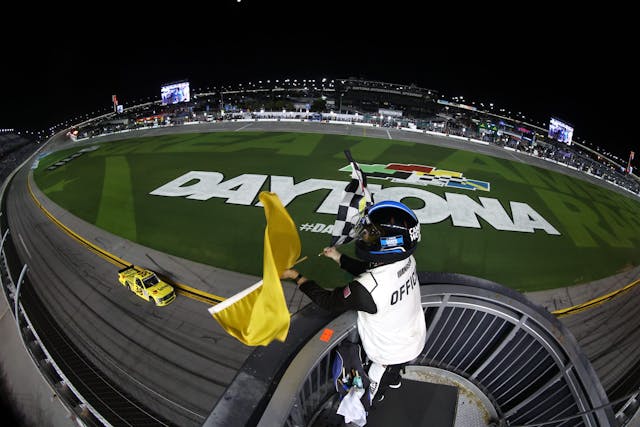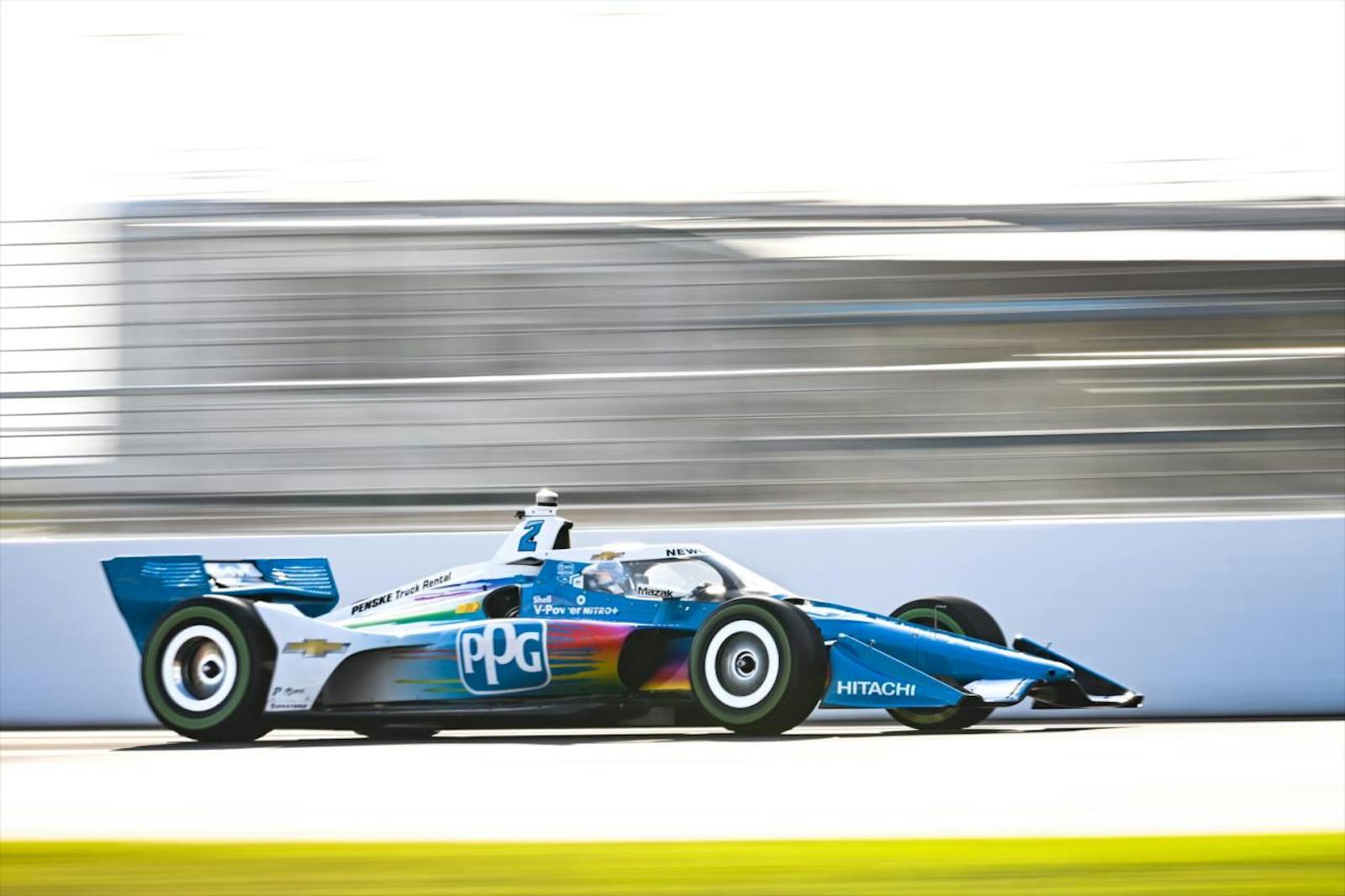How does that DAYTONA logo get there, anyway?
It’s subconscious, in a way – you know you are watching the Daytona 500, whether it’s on TV or you are one of the 99,000 people sitting in a seat – but every lap, your eyes brush over the massive painted logo on the infield that says DAYTONA, and a big two-tone pattern in the grass that surrounds the logo that says GREAT AMERICAN RACE.
Making it look that way is a process that takes months, said Andrew Gurtis, vice-president of track operations for NASCAR’s Southeast region, which includes Daytona, Talladega and Homestead-Miami.
First, how do they do that GREAT AMERICAN RACE using two different colors of green, a light and a dark?
“We’re able to do that by using two different types of rye grass – winter rye grass likes cooler weather – so we use a perennial rye that allows us to do a two-color pattern in the grass. I was out there for the Rolex 24 at Daytona,” where people are allowed, pre-race, onto the infield, “and the number of fans who reached down and touched that and asked, ‘Is this real?’ was amazing. I mean it looks great, but it’s part of a year-long cycle to make that grass look the way it does.”
Second, how about the huge DAYTONA logo?
“There are specialty turf paints that are meant to go down on the grass, look pretty, then in the course of time sort of rinse away,” Gurtis said. “That logo really identifies us – as you look at that you know right where you are,” on TV or in person. “We add some other graphics out there, but that large white Daytona is definitely an eye-catcher.”
Gurtis has a ground crew of four full-time employees, and they bring on more people for this event. A company named Missouri Turf and Paint actually paints the logo, and they also come back around Thanksgiving and help lay out the pattern for seeding the rye grass that gives the track the dual colors. “It’s done with computer mapping,” Gurtis said. “It’s a surprisingly meticulous process.”
What happens when, during the five races that precede the Daytona 500 starting on Thursday, a car slides off the pavement and through the grass? Or for that matter, a dozen of them, as happened with the Friday night truck race?
“Obviously the people responsible for taking care of the grass gasp,” Gurtis said, because they know it’s going to be a long night. “They’ll get out there and rake out wherever the damage is done and make it look as good as possible for the next day. It’s an asphalt racetrack that happens to have a four-and-a-half acre of grass right there in the trioval,” he said, “and things happen.”
One thing that doesn’t really affect the infield, but it does the asphalt outfield, is rain. Rain can actually help a bit, making the grass look more lush. “When the track was resurfaced in 2010 we paid particular attention to the drainage system,” so rain isn’t a big issue – except for the races.
Take a good look at the logos, because next week, they’ll be gone, along with the grass. “A day or two after the Daytona 500 we’ll start digging it up and build a Supercross course for the race on March 5, so the whole place gets trashed – the lovely, pristine Bermuda grass will be thrashed by motocross racers.
“On the heels of that,” Gurtis said, “we grade it and then we sprig it with Bermuda grass again, and it takes a number of weeks to grow that back in for the summer. Fortunately, as it heats up in Florida things grow well in this climate, so that green Bermuda grass will be back.”


